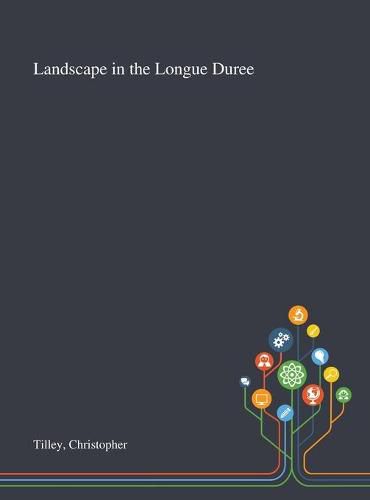Readings Newsletter
Become a Readings Member to make your shopping experience even easier.
Sign in or sign up for free!
You’re not far away from qualifying for FREE standard shipping within Australia
You’ve qualified for FREE standard shipping within Australia
The cart is loading…






This title is printed to order. This book may have been self-published. If so, we cannot guarantee the quality of the content. In the main most books will have gone through the editing process however some may not. We therefore suggest that you be aware of this before ordering this book. If in doubt check either the author or publisher’s details as we are unable to accept any returns unless they are faulty. Please contact us if you have any questions.
Pebbles are usually found only on the beach, in the liminal space between land and sea. But what happens when pebbles extend inland and create a ridge brushing against the sky? Landscape in the Longue Duree is a 4,000 year history of pebbles. It is based on the results of a four-year archaeological research project of the east Devon Pebblebed heathlands, a fascinating and geologically unique landscape in the UK whose bedrock is composed entirely of water-rounded pebbles. Christopher Tilley uses this landscape to argue that pebbles are like no other kind of stone - they occupy an especial place both in the prehistoric past and in our contemporary culture. It is for this reason that we must re-think continuity and change in a radically new way by considering embodied relations between people and things over the long term. Dividing the book into two parts, Tilley first explores the prehistoric landscape from the Mesolithic to the end of the Iron Age, and follows with an analysis of the same landscape from the eighteenth into the twenty-first century. The major findings of the four-year study are revealed through this chronological journey: from archaeological discoveries, such as the excavation of three early Bronze Age cairns, to the documentation of all 829 surviving pebble structures, and beyond, to the impact of the landscape on local economies and its importance today as a military training camp. The results of the study will inform many disciplines including archaeology, cultural and art history, anthropology, conservation, and landscape studies. This work was published by Saint Philip Street Press pursuant to a Creative Commons license permitting commercial use. All rights not granted by the work’s license are retained by the author or authors.
$9.00 standard shipping within Australia
FREE standard shipping within Australia for orders over $100.00
Express & International shipping calculated at checkout
Stock availability can be subject to change without notice. We recommend calling the shop or contacting our online team to check availability of low stock items. Please see our Shopping Online page for more details.
This title is printed to order. This book may have been self-published. If so, we cannot guarantee the quality of the content. In the main most books will have gone through the editing process however some may not. We therefore suggest that you be aware of this before ordering this book. If in doubt check either the author or publisher’s details as we are unable to accept any returns unless they are faulty. Please contact us if you have any questions.
Pebbles are usually found only on the beach, in the liminal space between land and sea. But what happens when pebbles extend inland and create a ridge brushing against the sky? Landscape in the Longue Duree is a 4,000 year history of pebbles. It is based on the results of a four-year archaeological research project of the east Devon Pebblebed heathlands, a fascinating and geologically unique landscape in the UK whose bedrock is composed entirely of water-rounded pebbles. Christopher Tilley uses this landscape to argue that pebbles are like no other kind of stone - they occupy an especial place both in the prehistoric past and in our contemporary culture. It is for this reason that we must re-think continuity and change in a radically new way by considering embodied relations between people and things over the long term. Dividing the book into two parts, Tilley first explores the prehistoric landscape from the Mesolithic to the end of the Iron Age, and follows with an analysis of the same landscape from the eighteenth into the twenty-first century. The major findings of the four-year study are revealed through this chronological journey: from archaeological discoveries, such as the excavation of three early Bronze Age cairns, to the documentation of all 829 surviving pebble structures, and beyond, to the impact of the landscape on local economies and its importance today as a military training camp. The results of the study will inform many disciplines including archaeology, cultural and art history, anthropology, conservation, and landscape studies. This work was published by Saint Philip Street Press pursuant to a Creative Commons license permitting commercial use. All rights not granted by the work’s license are retained by the author or authors.